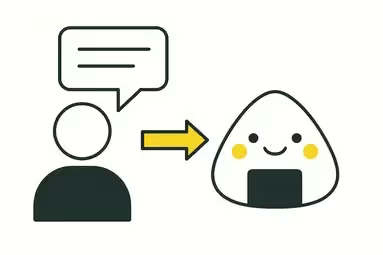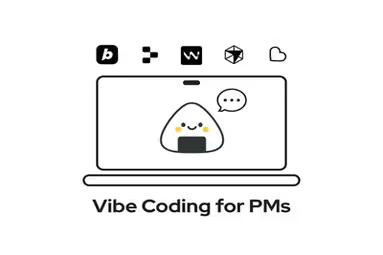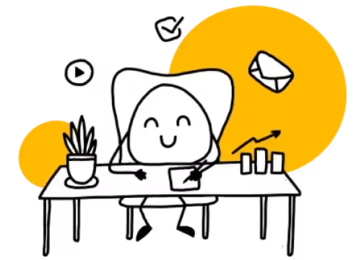.webp)
Continuous Product Discovery: Setup, Cadence & Tools
Learn continuous product discovery: set up the cadence, run weekly customer interviews, use an opportunity solution tree, and ship a lean experiment backlog.

How to Set Up Your Team for Continuous Product Discovery
If you’ve ever sprinted through research, shipped a feature, and then realized you solved the wrong problem… you know why continuous product discovery matters. Instead of big-bang research cycles, you keep a steady heartbeat: talk to customers every week, translate insights into opportunities, and test the smallest change that could improve outcomes. This article shows you how to set it up—cadence, roles, tooling, and the rituals that make discovery stick even when delivery pressure spikes.
What Continuous Discovery Is (and Isn’t)
Is: A repeatable loop that pairs weekly customer touchpoints with small, testable changes. You’re always learning, always narrowing uncertainty, always feeding delivery with evidence.
Isn’t: Endless interviews or decks that stall shipping. Discovery doesn’t replace delivery; it de-risks it.
Mindset shift:
- From “validate this solution” → to “understand the opportunity, then test options.”
- From quarterly research spikes → to a light, weekly rhythm that compounds.
For a practical primer that ties research to delivery, start with our Product Discovery Process—templates included.
Foundations: Team Setup, Roles, and Decision Rights
You don’t need a giant reorg—just clarity.
Who’s involved
- PM: owns the problem framing, outcomes, and learning cadence.
- Designer/UXR: plans/tunes methods; makes insights concrete (flows, prototypes).
- Engineer: joins interviews regularly; pushes for instrumentable, testable slices.
- Data: ensures logging, builds quick looks for leading indicators.
Decision rights (keep it simple)
- PM decides what opportunity to pursue next (with input).
- Trio (PM+Design+Eng) chooses the next testable slice.
- Anyone can propose an opportunity or assumption to test—capture them in one place.
Artifacts you’ll keep live
- Problem one-pagers (goal, who, evidence, constraints).
- Opportunity solution tree for the current outcome.
- Experiment briefs (hypothesis, metric, guardrails).
- Decision log (what we chose and why).
Research Ops: Recruiting, Scheduling, and Consent
Discovery dies when recruiting is hard. Make it frictionless.
Recruiting sources
- In-product intercepts (invite users at key moments).
- CRM/CS lists (recent churn, expansion, trial users).
- Community channels and user councils.
Scheduling & incentives
- Offer short, focused sessions (20–30 minutes).
- Rotate time zones; keep at least 2–3 slots per week.
- Incentivize modestly (gift cards, swag, feature flags/early access).
Consent & privacy
- Share a plain-language consent note.
- Avoid recording by default if it suppresses candor; if you record, store safely and time-limit access.
- Tag notes consistently (e.g., pain, trigger, workaround, context).
Opportunity Solution Tree: Turning Insight into Options
An opportunity solution tree (OST) visualizes the path from the desired outcome to opportunities (customer needs) to potential solutions. It keeps you from falling in love with one idea too soon and clarifies trade-offs.
How to build your first OST
- Pick one outcome (e.g., increase activation by 5% for self-serve teams).
- Cluster interview insights into opportunities (e.g., “confusing data import,” “unclear value on step 2”).
- Brainstorm solutions under each opportunity—tiny to large.
- Prioritize a thin solution to test first.
Teresa Torres’s primer is the go-to reference for OSTs:
https://www.producttalk.org/opportunity-solution-trees/
If you want to see OSTs in the wild, check our case study on continuous discovery & OSTs at Blinkist.
Assumption Testing & Experiment Backlog
Every promising idea hides risky assumptions (value, usability, feasibility, viability). Your job is to make them visible and test the riskiest one first.
Write a sharp hypothesis
- If we pre-fill a sample project after signup, time-to-first-value will drop by 20% (primary), without increasing early churn (guardrail).
Pick the smallest test that could teach you the most
- Copy test or email prompt
- Clickable prototype or concierge test
- A/B flag on a single step
- “Painted door” with follow-up interviews
- Smoke test landing page for a premium idea
Keep a lightweight experiment backlog
- One sentence per test, the assumption you’re targeting, the metric, and the next action if it wins/loses.
- Cap WIP; finish learning from one experiment before spinning up five more.
For a step-by-step guide to evaluating ideas before you build, see our Assumption Testing walkthrough.
A Weekly Cadence You Can Actually Sustain
Here’s a realistic rhythm that survives busy release weeks.
Monday — Focus & plan (30 min)
- Confirm the outcome for the cycle and the next assumption to test.
- Check recruiting status (are this week’s interviews booked?).
Tuesday — Customer interviews (2 × 25 min)
- Anchor each conversation to a specific moment (e.g., “invite a teammate”).
- Capture verbatims and context (what led up to the moment).
Wednesday — Synthesis & shape (45–60 min)
- Update the OST, choose one thin slice, and write a tiny experiment brief.
Thursday — Build & instrument (60–120 min)
- Pair with design/engineering on a tiny change; confirm logging and guardrails.
Friday — Demo the delta (30 min)
- Show what changed, what you learned, and what you’ll test next.
- Update decision log. If you’re mid-test, share interim signals and risks.
Every 4 weeks — Outcome review (45–90 min)
- Did we move the primary metric? Which opportunities are exhausted? What do we drop?
Metrics: How You’ll Know Discovery Is Working
You don’t need a hundred KPIs—just a few leading indicators that prove your loop is healthy.
Loop health
- Weekly touchpoints completed (target: 2–5).
- Experiments completed per month (target: 2–4).
- Time from insight → live test (target: ≤14 days).
Outcome movement (example)
- Activation rate or time-to-first-value
- Task success / step completion
- Retention for users who touched the new slice vs. control
Guardrails
- Crash rate/latency
- Ticket volume/complaint rate
- Churn or downgrade spikes in affected cohorts
Common Pitfalls & How to Avoid Them
- Interview theater: long sessions, no decisions.
- Fix: 25 minutes, one moment, one decision due after synthesis.
- Output over outcome: you shipped tests, but nothing moved.
- Fix: re-check that your outcome is tight and the opportunity is real; don’t test five solutions for the wrong problem.
- Research bottlenecks: only the designer talks to users.
- Fix: rotate PM and engineers through interviews; share notes and clips.
- Overbuilt tests: two-week build for a yes/no question.
- Fix: pick the smallest test that could falsify your riskiest assumption.
- No logging: you can’t tell if it worked.
- Fix: confirm events and guardrails before you “just ship it.”
FAQs
Two to five short touchpoints are enough. More is fine, but only if the insights lead to decisions and tests.
A dedicated UXR helps, but any team can start. Keep methods simple, share a script, and have a designer or PM pair with an engineer for synthesis.
Protect one lightweight cadence (two interviews + one small test per week). Write it into the team’s working agreement so it survives release pressure.
Do both. Run the lightweight loop for fast learning while a larger study runs in parallel. Use big research to pick the outcome; use continuous discovery to find the shortest path to moving it.
Conclusion
Setting up continuous product discovery isn’t about hiring a big research org—it’s about installing a humble, repeatable loop: weekly customer interviews, an opportunity solution tree to focus on real needs, and a tiny experiment backlog that feeds delivery with evidence. Keep the artifacts light, the cadence steady, and the metrics honest. When the loop runs, you ship fewer guesswork features—and deliver more moments that customers actually value.
Setting up continuous product discovery isn’t about hiring a big research org—it’s about installing a humble, repeatable loop: weekly customer interviews, an opportunity solution tree to focus on real needs, and a tiny experiment backlog that feeds delivery with evidence. Keep the artifacts light, the cadence steady, and the metrics honest. When the loop runs, you ship fewer guesswork features—and deliver more moments that customers actually value.
Read More Posts
.webp)
Product Manager vs. Product Owner vs. Project Manager

Customer Interview Techniques for Better Product Decisions

How to Add Value in 2 Weeks: From Our Experience as Interim Product Managers

Introduction to Vibe Coding for Product Managers: From Idea to MVP

Communication Tips for Product Managers That Get Responses



